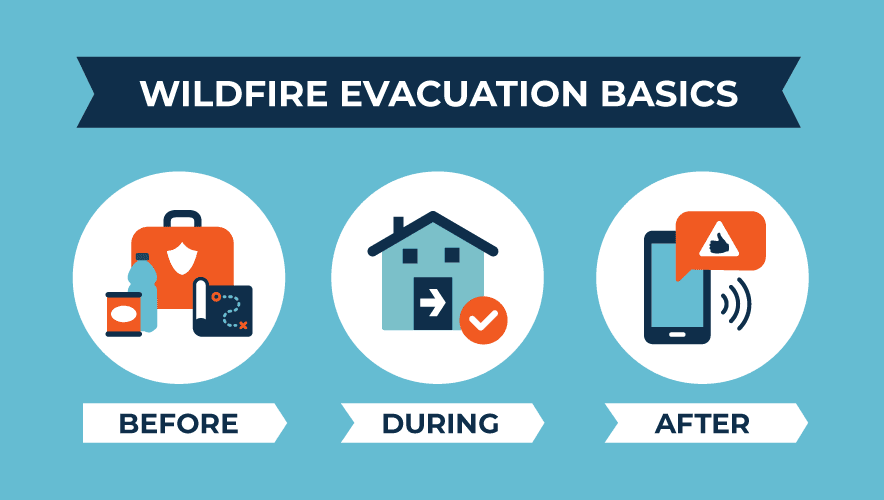What to Expect from a U.S. Government-Coordinated Evacuation
After a 9.0-magnitude earthquake struck the coast of Honshu, Japan, in 2011, creating a tsunami that caused a meltdown at a nuclear power plant in Fukushima, the Japanese government and the U.S. military worked together to create an evacuation zone and move people to safety.
“The U.S. 7th Fleet assembled 19 ships, 140 aircraft, and 180,000 personnel to relieve the Japanese people and evacuate the areas affected,” according to the Military Times. “Nearly 15,000 people were evacuated and more than 8,300 bodies were recovered. It was the [Japanese] Self-Defense Forces’ largest mission ever.”
But this level of coordination and government assistance is not always the case when an international mass evacuation takes place.
The U.S Department of State, for instance, provides security updates for travelers and expatriates abroad who enroll in its Smart Traveler Enrollment Program. It will also recommend U.S. citizens leave an at-risk area if it is safe to do so—or leave the country all together.
And in some instances—if commercial transportation is not available, consular officers are at the local embassy, and conditions permit—the department will identify transportation options to help U.S. citizens travel out of a crisis location. But often, it encourages individuals to take matters into their own hands or to leave the area before a crisis emerges.
“Sometimes situations are so dangerous that we are not able to help organize any departure options,” according to the State Department. “While we work closely with the Department of Defense, you should not expect the U.S. military to assist you when we recommend that you leave a country, as conditions may not permit such assistance.”
Government Evacuation Options
In some extreme situations, the U.S. government may work with host governments and other nations’ governments to arrange chartered or noncommercial transportation for U.S. citizens wanting to evacuate—such as via air, land, or sea. Sometimes, the U.S. military will support these efforts—such as during the Afghanistan evacuation in 2021.
In U.S. government-coordinated evacuations, evacuees are responsible for having visas, vaccinations, and documentation that allows them to travel, as well as arranging for and paying for their living expenses or transportation after the initial evacuation is completed.
“Generally, the U.S. government will provide a transportation option to a location away from the crisis event, usually a neighboring country or a different part of the same country,” according to a State Department fact page. “This nearby safe location is rarely the United States.”
The U.S. federal government uses a separate process for State Department employees who may be evacuating a country because they have been ordered to do so. Military dependents also typically follow a separate process for evacuations.
During the Evacuation
Before boarding a U.S. government-coordinated transport—such as a charter or military flight—individuals must sign an Evacuee Manifest and Promissory Note (known as the form DS-5528) before departure.
Evacuations—including last-minute air fare or train tickets—may be expensive. U.S. citizens and third country nationals are not expected to pay these fees before they board their mode of transportation in an evacuation, but they will be required to reimburse the U.S. government for the cost.
“To board these transports, you will need to complete and sign a form promising to repay the U.S. government,” according to the State Department. “The amount billed to evacuees is based on the cost of a full fare economy flight, or comparable alternate transportation, to the designated destinations that would have been charged immediately prior to the events giving rise to the evacuation.”
Evacuees who have pets will also need to make arrangements to leave them in the area because pets are not allowed on U.S. government-coordinated evacuations, unless they are working animals that can be accommodated.
In some instances, the U.S. government will consider it too dangerous to attempt to evacuate. Instead, it may urge individuals to “stay at a safe location and leave as soon as you can do so safely, using transportation you are able to find on your own.”
Post-Evacuation
After the evacuation is completed, evacuees will receive a bill (sent to a location determined by the DS-5528 form) to repay the U.S. government. These payments are typically due within 30 days of the bill date, with interest and administrative charges added for not paying in full by the deadline.
“Once a debt has been delinquent for 90 days, the debt will be referred to the Department of Treasury for collection and they may collect the debt via administrative offset of federal payment (e. g tax returns, social security), referral to a private collection agency, referral to credit bureaus, through administrative wage garnishment and/or through other actions permitted by law,” the State Department says. “Once you have received your bill you may contact us for more information about your evacuation loan, to repay your loan, or to request an installment agreement.”
Megan Gates is senior editor at Security Management. Connect with her at [email protected] or on LinkedIn. Follow her on Twitter (@mgngates) or on Mastodon (@[email protected]).









